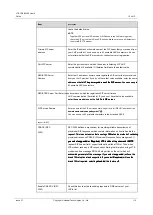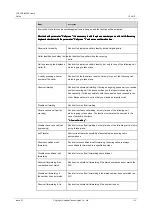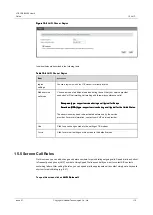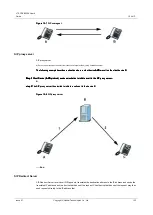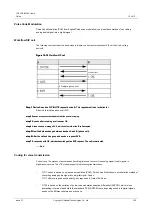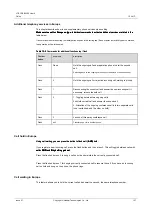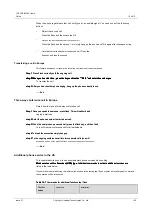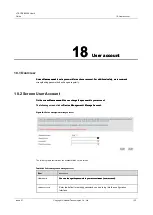
LTE CPE B2368 User's
Guide
15 VoIP
Issue 01
Copyright © Huawei Technologies Co., Ltd.
122
SIP Service Domain
Service domain SIP VoIP provider is the domain name in the SIP URI. For example, if a SIP address
[email protected], then the service domain SIP " VoIP-provider.com ".
[email protected], then the service domain SIP " VoIP-provider.com ".
[email protected], then the service domain SIP " VoIP-provider.com ".
[email protected], then the service domain SIP " VoIP-provider.com ".
SIP Registration
Each individual LTE modem is a SIP user agent (UA). In order to provide voice services, has a public IP address
to communicate with other servers within the SIP and RTP.
SIP user agent has to register to the SIP registration server and provide information about the user, which
represents, as well as current IP address (for proper orientation for incoming SIP requests). After successful
registration, SIP aware that users (identified by a dedicated SIP URI) are represented by the respective agent.
He knows as to which IP address is required SIP requests and responses sent.
Registration initializes client UAC (User Agent Client) running on a VoIP gateway (eg. LTE modem). The gateway must be
configured to include information about the recipient of the message REGISTER and relevant information about the user, eg.
The necessary passwords.
Registration request to the SIP server has limited validity. UAC client needs during this period of validity of the registration
recover. If they do not, they will be registration information removed from the database to the SIP registration server, and the
connection is interrupted.
LTE modem after switching on always trying to register all active ports customers. When you turn previously
inactive port customers, LTE modem immediately try to register it.
authorization requirements
SIP registration (and subsequent requests) require authentication by user name and password. These
credentials are verified using the system digestní (summary) via HTTP authentication (see RFC3261. " SIP:
credentials are verified using the system digestní (summary) via HTTP authentication (see RFC3261. " SIP:
credentials are verified using the system digestní (summary) via HTTP authentication (see RFC3261. " SIP:
Session Initiation Protocol ').
Session Initiation Protocol ').
SIP servers
The basis of SIP is client-server architecture. SIP client is an application or device sending SIP requests. These
requirements correspond SIP server.
Once started via SIP VoIP call begins at the client and server ends. SIP client can be a computer or phone.
One device can be client and server SIP.
SIP user agent
SIP user agent is a device that can initiate and receive VoIP phone calls. This also means that through SIP can
also initiate communications in a peer-to-peer, even though the protocol is based on client-server. The following
picture phones
AND
and
B
both of which can serve as a user agent and initiate the call. phones
AND
and
B
They
picture phones
AND
and
B
both of which can serve as a user agent and initiate the call. phones
AND
and
B
They
picture phones
AND
and
B
both of which can serve as a user agent and initiate the call. phones
AND
and
B
They
picture phones
AND
and
B
both of which can serve as a user agent and initiate the call. phones
AND
and
B
They
picture phones
AND
and
B
both of which can serve as a user agent and initiate the call. phones
AND
and
B
They
picture phones
AND
and
B
both of which can serve as a user agent and initiate the call. phones
AND
and
B
They
picture phones
AND
and
B
both of which can serve as a user agent and initiate the call. phones
AND
and
B
They
picture phones
AND
and
B
both of which can serve as a user agent and initiate the call. phones
AND
and
B
They
picture phones
AND
and
B
both of which can serve as a user agent and initiate the call. phones
AND
and
B
They
can simultaneously serve as an agent for a user to answer an incoming call.



